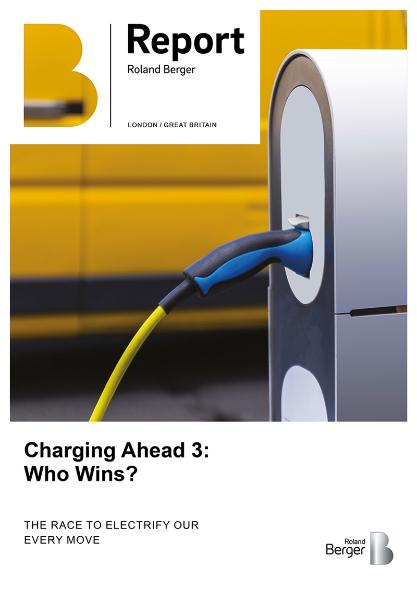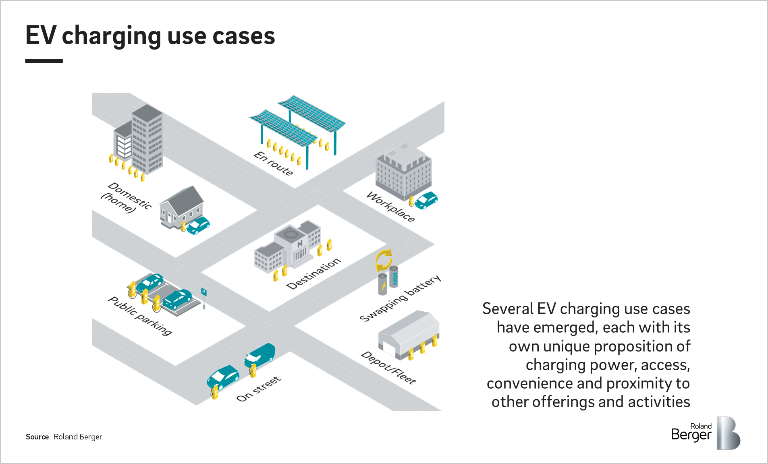Charging Ahead 3: Who wins?
![{[downloads[language].preview]}](https://www.rolandberger.com/publications/publication_image/Roland_Berger_INS_840_Charging_Ahead_3_COVER_download_preview.jpg)
The race to electrify our every move


By Adam Healy and Tim Longstaff
It is probably now beyond debate that battery electric vehicles (BEVs) have won the race to drive the decarbonisation of road transport. Over the next 2–3 decades the global vehicle parc is set to undergo its most significant transformation since the advent of the automotive industry, with the main constraints on the rate of uptake currently geopolitics and supply chain issues. By 2035, we (and various industry and government bodies) expect every 1 in 2 cars in the UK to be a BEV. This will have profound implications for powering road transport: the number of miles driven annually by BEVs in the UK is expected to increase by ~4,000% between 2021 and 2035. However, the approach to EV chargers and charging remains much less clear. EV charging remains most convenient, and an order of magnitude cheaper, when at home; most Brits have off-street parking. And yet public charging is clearly rising as owner cohorts change and travel further afield, and use cases demand more reliability, convenience, and entertainment. EV charging is thus not just a substitute for petrol stations, but also a recasting of the electricity retail market, and of hospitality and leisure on the move.

The lack of a centralised view on how many chargers of what type are needed, for which use cases, and where, means it will be left to market forces to determine who will win and lose. The theoretical ubiquity of EV charging and accessibility of technology means that the competitive landscape has quickly become crowded, with a broad range of stakeholders dipping their oars into a profit pool that promises much but is currently very shallow indeed. Charge point operators, fuel forecourt operators, motorway service area operators, oil companies, energy and utilities companies, retailers, real estate operators, infrastructure investors, e-Mobility Service Providers (EMSPs), automotive OEMs, and others, are all vying for their roles in the value chain.
The unrelenting flow of investment into EV charging is only serving to up the stakes in the race to electrify our every move. Unchecked, it will lead to an overshoot in the number of economically feasible chargers in certain use cases and locations; investment cases will not be met, with obvious consequences for EV charging networks and their users. The average utilisation of the ~6,000 DC public EV chargers in the UK today is less than 5%, a rate on which few business plans will have been built. There will be pain for investment ahead of the curve.
We expect that in the longer term, charging will be split between slower charging at home or work, and rapid charging on route and in some destinations – not dissimilar from today’s ‘petrol station’ type use case – with a spectrum of smaller niche use cases besides. This will have a wide range of implications for the numerous business models touching the EV charging value chain and the profit pools available.
We attempt to identify emerging winners and losers from the many runners in the UK EV charging industry. We hope that we are right, but we at least aim to stimulate debate.

![{[downloads[language].preview]}](https://www.rolandberger.com/publications/publication_image/Roland_Berger_INS_840_Charging_Ahead_3_COVER_download_preview.jpg)
The race to electrify our every move